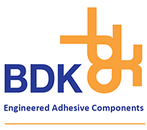There are 2 main medical adhesive technologies: acrylic adhesives and silicone adhesives.
Although acrylic adhesives hold the majority market share in the UK healthcare industry, silicone adhesives are the adhesive of choice for advanced woundcare applications.
In this article, we will take a closer look at their benefits and how they impact woundcare manufacture.
Benefits of Acrylic Adhesives in Woundcare
Typically, acrylic adhesives are used for mainstream woundcare. As a generational product that has been used for decades, acrylic adhesives are seen as a standard product in all hospitals.
This is because they are strong, affordable and versatile. Whether acrylic adhesives are used for IV dressings or wound dressings, the adhesion will be strong and durable with dressings normally changed every 2-3 days.
However, because of their strength, acrylic adhesives can cause medical adhesive related skin injuries (MARSI) when removed. They can remove layers of the skin they adhere to when they are removed as well as disturb the wound bed during its healing process.
Benefits of Silicone Adhesives in Woundcare
Silicone adhesives are considered as a much more high-grade, premium product and the cost reflects this in terms of economy of scale.
Silicone adhesives still provide the 2 – 3 day application time but deliver a gentler adhesion resulting in low trauma and pain. Their durability doesn’t disrupt the skin layers while another benefit of silicone adhesives is that you can easily reposition the dressing if necessary. Although different silicones will have different levels of repositionability, most will be able to handle 5-10 checks. This means medical professionals will be able to lift and put back the woundcare dressing regularly to check the wound.
Other Adhesive Technologies in Woundcare
Acrylic is a type of adhesive which can be incorporated into different substrates; this is where hydrogel dressings are introduced. Hydrogel dressings typically use a non-adhesive, water-based gel that provides a moist even cooling effect. These dressings adhere to the skin through a secondary adhesive layer which, depending on the application, may be acrylic or silicone. Hydrogel is low trauma like silicone adhesives which is ideal for products such as chest seal dressings.
Also, hot melt adhesives are a big volume, low cost solution used for home woundcare solutions, such as plasters. Their main purpose is for quick tack but generally aren’t as long wearing or durable as acrylic or silicone adhesive technologies.
Adhesive Technologies in Woundcare
Both acrylic and silicone adhesives have their own set of advantages and limitations. While neither of them are completely waterproof, they do exhibit some level of resistance to water. Additionally, since they are non-permeable, neither of them are breathable. However, it is possible to add perforations to the adhesive layer to allow for air and fluid to pass through. For example, BDK’s perforation capabilities enable wound care products made from these materials to have perforations ranging from 1-3mm. This helps prevent wound bed maceration while still maintaining the benefits of using acrylic or silicone adhesives.
Woundcare products are specifically designed to help the body heal and function at its best. Acrylic and silicone adhesives are commonly used as the base for these products, and additional ingredients can be added to tailor their healing properties to specific applications and requirements. This can include factors such as age, medical conditions, burns, scars, and more. Active ingredients as well as additives, such as vitamin E, aloe vera, and CHG, can be incorporated into these products to help aid in the healing process.
Find out more today by getting in touch with us and don’t forget, we’re exhibiting at the EWMA conference between 3 – 5th May 2023.
Please come and talk to us on Stand 37 to discuss your current raw material and converted product needs or about your existing new projects, future products or performance requirements!
